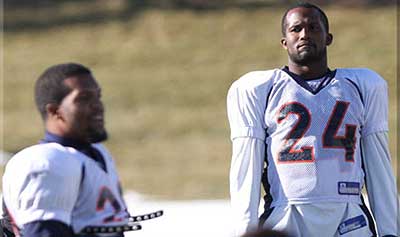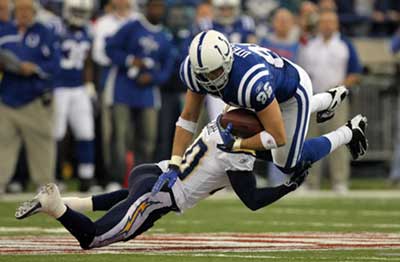Frequently Asked Questions
Question; How important is the movement of the arms in speed training?The arm action in sprinting is critically important in covering ground fast, stopping and changing direction. Arm action determines stride length and the goal of speed technique training is to get an athlete to the destination with sold body mechanics and taking the least amount of steps. Increasing stride length by reaching for steps is counterproductive. If the arms are too close to the chest on the upswing and hands travel "pocket-to-chest" athletes will take short choppy strides and this is very slow. This is perfect for cutting and slowing down, but horrible for burst speed.
One of the most important questions I ask every athlete even the pros I work with; "do you remember the day you first learned how to run?" Many remember the day they learned how to ride a bike, but no one remembers the day they first learned how to run. This question makes the point that we all learn how to run with body upright with arms close to chest with hands traveling "pocket-to-chest" which is perfect for distance running, but horrible for speed. But that's the way athletes sprint naturally until they learn speed technique. We learn how to run when we are so young, we aren't strong enough to place the body in the correct sprinting position with a straight body, forward lean resembling an airplane taking off.
When the body is positioned properly -- principally driven by correct arm action -- it forces the brain and nervous system to recruit all three muscle fiber types to propel the movement of sprinting and now the strongest muscles in the body that are loaded with fast-muscle fiber propel the movement. The body is always trying to do things with slow-muscle fiber in the endurance energy system so you can endure all day. The brain thinks it doing you a favor by not recruiting fast-muscle fiber and conserving your fast-muscle in case you need to sprint away from a bad guy later today. For this reason, most athletes naturally take a false step which is a huge time-killing-wasted step in a more upright position.
Your middle ear also plays a huge role in speed technique. Your middle ear could care less how fast you run or how high you jump. Your middle ear's main role in life is to keep you from falling. Your middle ear sends messages to your brain to run upright with arms close to your chest until you learn correct speed technique and rewrite default in the brain by practicing perfect speed technique for sports-specific and position-specific movements.
I can easily get an athlete to run faster in a straight line in two hours just with technique, but the moment the athlete gets on the field, the brain and nervous system go back to the default setting of incorrect technique until we practice very precise, position-specific movements with newly learned speed skill of positioning the body to propel the movement with the strongest muscle in the body that are loaded with fast-muscle fiber.
I do the exact same three technique drills (leg drives for drive phase, claw drill for fly phase, butt bumpers with arms locked at 90 degrees and moving "pocket-to-chin level" in every workout. These three drills rehearse perfect speed technique so we play the correct neurological video game in the brain before we work on perfecting position-specific movements. We then work on overspeeding precise ILB movements to get a positive neurological adaptation to the training. Overspeeding common ILB movements is just like training the brain to play a new video game faster and faster neurologically, except when you do this, you recruit more fast-fiber muscle that propel position-specific movements. This type of training improves performance through neurologic pathways, but at the same time, the athlete keeps getting stronger and stronger for that very specific position-specific movement and that translates into faster and faster. - Phil
Denver Broncos Safety McCree doesn't hit pause button
Marlon McCree and All-Pro Champ Bailey during Warm up
Marlon McCree makes key tackle in San Diego Chargers vs Indianapolis Colts
during post season run at the Super Bowl.

